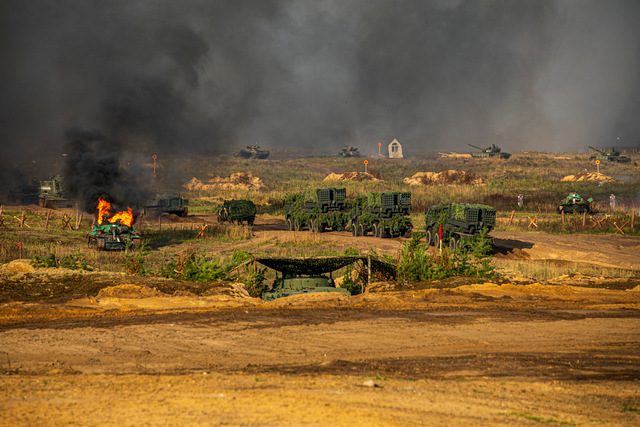
Image source: Photo: multimedia.the Ministry of Defense.RF
At the main stage of the large-scale Zapad-2021 exercises, Russian troops had to destroy real tanks. This role was played by real armored vehicles, which were in service with our army until the end of the first decade of the last century.
For example, accurate hits turned the main T-80UD battle tanks made in Ukraine in the 80s into flaming torches. These combat vehicles have been serving in the Moscow region for more than two decades.
The fact that the Soviet army received new tanks became known thanks to the publication of a photo in the magazine "Soviet Military Review" in 1988. The first public demonstration took place on May 9, 1990 during the anniversary Parade on Red Square. On November 7 of the same year, the udeshki passed through the main square of the country for the last time.
Then they lit up on the streets of the capital during the coup in August 1991 and during the tragic events of October 1993.
In the last years of the Soviet Union, it was planned that the diesel T-80UD, along with the gas turbine T-80U, would become the main tanks of the ground forces in the most critical areas. Moreover, the emphasis was planned to be made on cheaper cars from Kharkiv.
However, the collapse of the USSR put an end to the plans for rearmament. The Kantemirov and Taman divisions managed to receive less than four hundred units. Several dozen tanks intended for shipment to the Moscow Military District were confiscated by the Ukrainian authorities, although the plant received money for them.
Some sources report that the T-80UD were withdrawn from the military in 1995, but in fact they remained in service in the first decade of the new century, although their number was reduced compared to the original one. First of all - because of problems with the operation of two-stroke engines, produced only in Kharkiv, for which the manufacturer asked for a substantial amount, without making any discounts.
As a result, over time, these tanks began to rust on storage sites. Some of them ended up in the museum, others, who were less lucky, became targets at the training grounds, having been honorably burned in battle, even if it was a training one.
Lev Romanov
